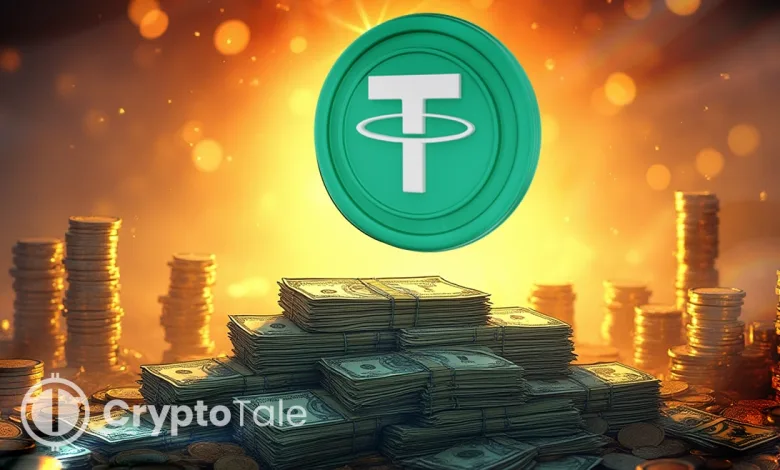Tether’s $500B Bid Sparks Debate on Stablecoin Future Role

- Tether plans to acquire $15B to $20B for a 3 percent stake at a $500B valuation.
- The company posted a $4.9B profit in Q2, while USDT market share reached 56 percent.
- A $500B valuation places stablecoins closer to global utilities and shadow central banks.
Crypto giant Tether is reportedly in talks to raise between $15 billion and $20 billion in a private placement that could value the firm at $500 billion. According to sources, the firm is seeking the funds for a roughly 3% equity stake. Sources added that the figures represent top-end targets and that eventual numbers may end up lower, depending on the stake offered.
Fundraising Plans and Early Details
The report stated that the planned transaction would involve new equity rather than existing investors selling their shares. Shortly after the report, Tether’s CEO, Paolo Ardoino, confirmed the fundraising plan on his official X account, stating that the firm was “evaluating a raise from a selected group of high-profile key investors.”
Ardoino added that the funds would “maximize the scale” of Tether’s strategy across its current and new business lines “by several orders of magnitude.” He listed stablecoins, distribution ubiquity, artificial intelligence, commodity trading, energy, communications, and media as areas the company aims to expand. Reports say that one person close to the matter cautioned that the talks remain at an early stage. This means the eventual details, including the total size of the offering, could still change.
Tether’s Market Position and Financial Profile
On the market side, Tether’s USDT stablecoin remains the largest dollar-backed token in circulation, with a market value of $172.8 billion, according to CoinMarketCap. This gives the company a 56% share of the $307.2 billion stablecoin market. The token serves as a global on-ramp, settlement tool, and liquidity anchor across digital asset markets.
Tether has also posted robust profits despite its relatively small workforce. The company generated $4.9 billion in profit during the second quarter of this year, bringing its year-to-date total to $5.7 billion. On the other hand, OpenAI has discussed raising funds at a $500 billion valuation.
Notably, Tether has long resisted complete transparency around reserves and internal governance. Any valuation must account for this uncertainty, yet investors appear willing to accept the discount or assume Tether will be compelled into greater disclosure.
Related: Tether Invests in Gold: A Secure Strategy vs. Thumzup’s Crypto Innovation
Regulation, Influence, and Global Implications
The planned equity sale invites potential regulatory attention. A formal investment round involving institutional money may force Tether to comply with higher reporting standards and governance reforms. Bo Hines, the newly appointed CEO of Tether USAT, said at a Seoul conference on Tuesday that the company had “no plans to raise additional funds” in the United States.
Stablecoin adoption continues to expand worldwide, driven by their low-cost, efficient ability to move money and connect users to blockchain applications. In the United States, the recently passed GENIUS stablecoin bill is intended to preserve dollar dominance by establishing clear rules for issuers.
A $500 billion valuation also carries symbolic weight. It places stablecoins alongside global financial actors and raises questions about whether they are evolving into “shadow central banks.” Estimates suggest Tether holds tens of billions of dollars in U.S. Treasuries. Its purchasing decisions now have the capacity to influence yields and capital flows—powers typically reserved for sovereign entities.
If the valuation is upheld, stablecoins will increasingly be viewed as financial instruments that derive value from appreciation of reserves, margins, and regulatory robustness, rather than speculative trading. Future industry funding rounds will likely have a floor set by Tether’s implied multiple. Could this represent the point at which stablecoins begin to be globally priced as financial utilities, as opposed to crypto-market tokens?




